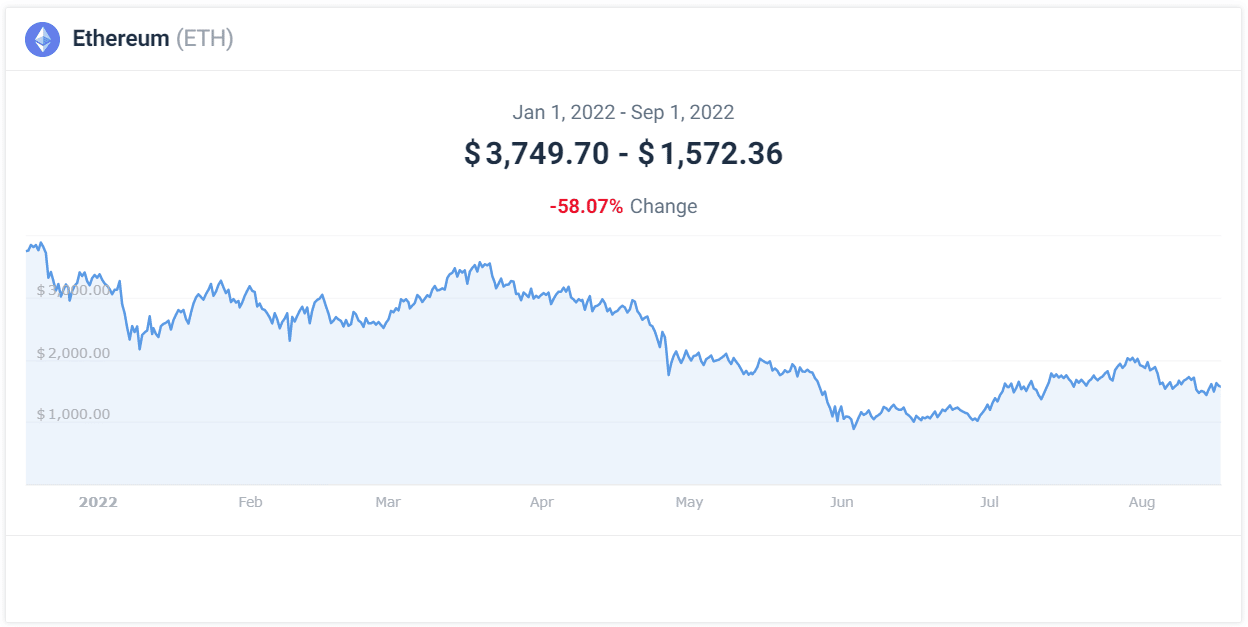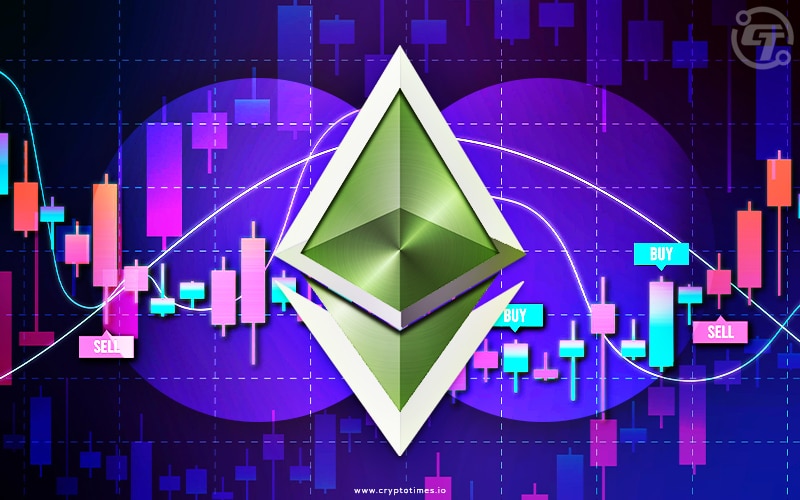The long-awaited Ethereum Merge is expected to happen sometime between September 10 and September 20. The Merge will be the culmination of a multi-year process of transitioning Ethereum from Proof-of-Work to Proof-of-Stake, a much more environmental friendly and scalable consensus mechanism.
From the perspective of fundamentals, the Merge is the most highly anticipated event in blockchain and crypto this year. If it were to happen in a bull market, there would likely be a speculative frenzy and high volatility in the ETH markets right now.
However, Ethereum Merge is happening during a very quiet period in the cryptocurrency markets, with investors exercising caution due to poor macroeconomic conditions. Since January 1, the ETH price has dropped from $3,750 to $1,580—a decline of roughly 58%.

With the Merge quickly approaching, it’s natural that many crypto investors and market observers are wondering whether it will trigger a rally or a sell-off in the markets for ETH. While some might assume that such an important upgrade would result in positive market momentum, the reality though is a bit more complicated.
Based on technical indicators, crypto market data aggregator CoinCodex predicts that the price of Ethereum on October 1 (when the Merge will likely have already been completed) will be $2,270. On the other hand, the fundamentals seem to be less optimistic, at least in the short term.
The Merge Might not have a Big Effect on the Ethereum Price in the Short term
There’s a certain possibility that the Merge will turn out to be a “buy the rumor”, sell the news event. We could see a run-up in the ETH markets a few days before it happens, and then a sell-off back to previous price levels once the upgrade is complete.
This is a very common pattern in the cryptocurrency markets, which are still primarily based on speculations—users drum up interests and hype about the upcoming fundamental event, which then inevitably doesn’t live up to the expectations.
It’s also possible that technical difficulties could lead to Ethereum Merge failing to complete. If the Merge were to be postponed or cause damage to the Ethereum network, we would most likely see a significant drop in the ETH market.
We also have to consider the fact that immediately after the Merge happens, the Ethereum user experience will stay more or less the same. Transactions will still take roughly the same amount to process, and users won’t benefit from lower transaction costs until the sharding mechanism is introduced.
For Ethereum, Proof-of-Stake will primarily result in much lower energy consumption until further upgrades are implemented.
With this in mind, we can expect that the Merge itself likely won’t result in droves of new users joining the Ethereum network.
The long-term view is much more Bullish
While there aren’t many reasons why the Merge should increase the price of Ethereum in the near future, it will create the groundwork for making Ethereum a more scalable platform and increasing the appeal of its tokenomics to investors.
After the Merge is completed, Ethereum developers will begin focusing their attention on sharding, an approach to scaling that will allow Ethereum to maintain its decentralization.
When sharding is combined with layer 2 scalability solutions that work on top of the Ethereum mainnet, Ethereum is likely to see massive scalability improvements in the coming years, resulting in cheaper and faster transactions for the users.
From tokenomics’ perspective, the issuance of new ETH will slow down significantly after The Merge. Per Ethereum.org, the Proof-of-Work Ethereum network issues approximately 13,000 ETH per day to reward miners.
Since the launch of the Beacon Chain in December 2020, an additional 1,600 ETH have been issued every day to reward stakers. Following the Merge, miners will no longer be necessary, implying that Ethereum staking will be the only source of new ETH issuance.
Combined with the ETH burning introduced in EIP-1559, it is likely that net ETH inflation will be reduced to zero after the Merge. Depending on how much ETH is burned, ETH could also become deflationary. This is an attractive proposition for ETH investors, as the holdings will not be diluted by the issuance of new ETH. For this reason, the Merge seems to be a bullish event for ETH over a long term.
FAQ about the Ethereum Merge:
What is the Ethereum Merge?
Ethereum Merge is the mechanism of transitioning Ethereum blockchain from POW to POS consensus mechanism. Ethereum’s Proof-of-Stake Beacon Chain will be combined with the Ethereum mainnet.
Will ETH stakers be able to withdraw their ETH once the Merge happens?
ETH stakers will not be able to withdraw their ETH immediately after the Merge happens. Stakers will have to wait for Shanghai, a future upgrade before they will be able to withdraw staked ETH.
Will transaction fees be lower after Ethereum Merge?
No, the Merge itself won’t have a noticeable impact on Ethereum transaction fees. However, it will lay the foundation for future upgrades, which will improve the scalability of Ethereum and lower transaction costs.
If I hold ETH, do I need to do anything to prepare for the Merge?
If you’re an ETH holder, you don’t need to do anything in particular to prepare for the Merge. Your coins will stay safe in your Ethereum wallet.






